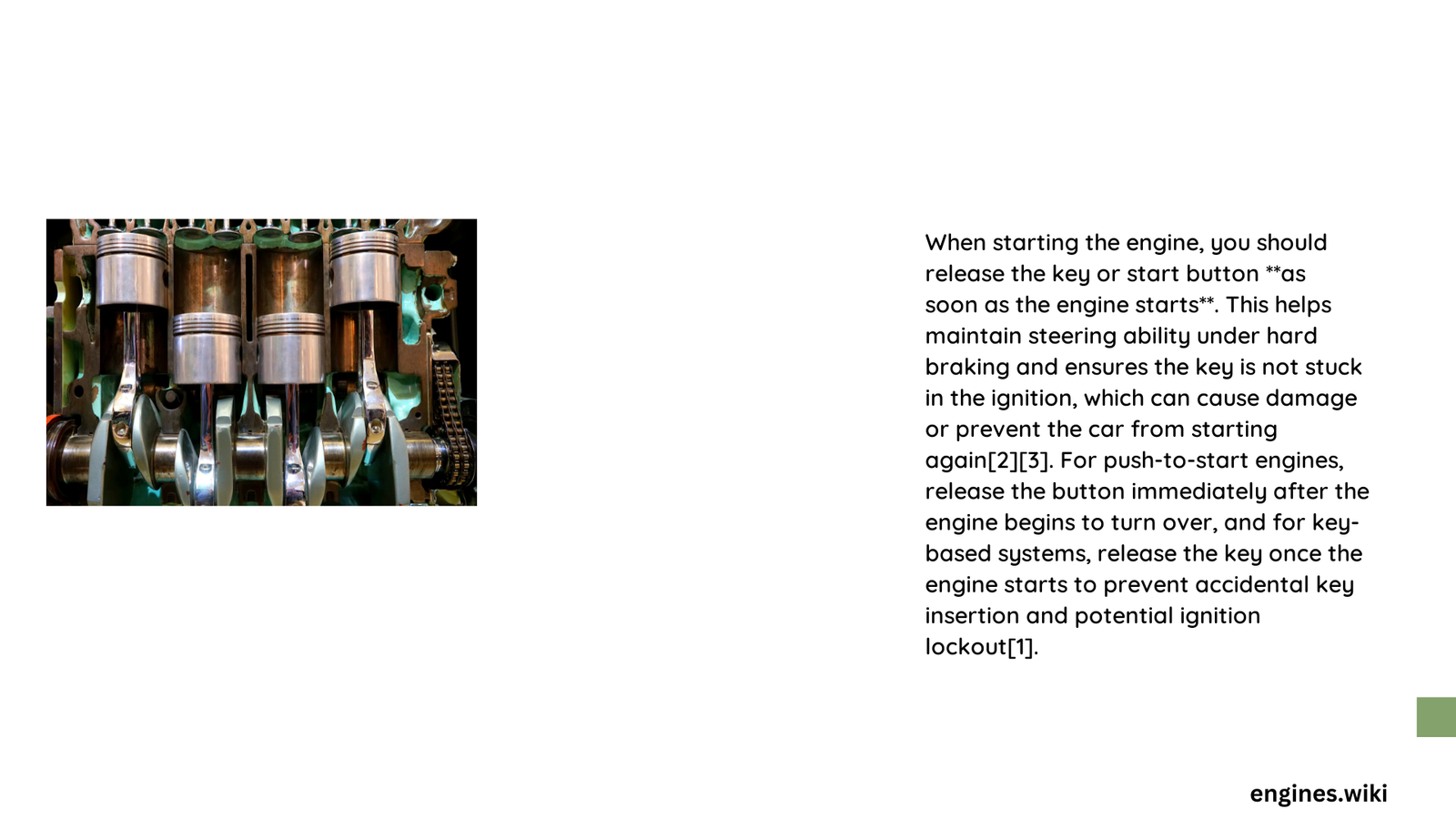Modern vehicles with push-button start systems require specific techniques to safely and effectively start the engine. Understanding the correct method of engaging and releasing the start button is crucial for vehicle operation, preventing potential mechanical issues, and ensuring personal safety. Drivers must follow a precise sequence of actions to successfully start their vehicle and protect both the vehicle’s electrical system and their own well-being.
What Happens When You Press the Engine Start Button?
When initiating the engine start process, drivers must understand the critical steps involved in using a push-button start system. The procedure involves more than simply pressing a button and expecting immediate engine activation.
Key Steps for Proper Engine Start
- Verify Key Fob Presence
- Ensure the key fob is inside the vehicle
-
Position key fob within the vehicle’s detection range
-
Brake Pedal Engagement
- Firmly press the brake pedal
-
Maintain brake pressure during start sequence
-
Transmission Position
- Shift vehicle to Park (automatic) or Neutral (manual)
- Confirm correct gear selection before starting
How Long Should You Hold the Start Button?

| Action | Duration | Recommended Technique |
|---|---|---|
| Initial Press | 1-2 seconds | Hold until engine cranks |
| Button Release | Immediately after engine starts | Quick, firm release |
| Post-Start | Verify engine running | Check dashboard indicators |
Critical Timing Considerations
Drivers must understand that the start button requires a precise engagement technique:
- Hold the button until the engine fully starts
- Release immediately once engine runs
- Avoid prolonged button pressing
What Are the Potential Risks of Improper Button Usage?
Incorrect start button techniques can lead to several potential issues:
- Premature electrical system wear
- Battery drainage
- Potential starter motor damage
- Increased mechanical stress on vehicle components
Safety Recommendations
- Always keep key fob nearby
- Maintain brake pedal pressure
- Check transmission position
- Listen for proper engine start
Technical Insights into Push-Button Start Systems
Modern push-button start systems utilize advanced electronic communication between:
- Key fob transponder
- Vehicle’s central computer
- Ignition mechanism
- Security systems
The intricate communication ensures:
– Secure vehicle access
– Prevent unauthorized starts
– Provide comprehensive diagnostic capabilities
Expert Tips for Smooth Engine Starts
- Practice consistent start button technique
- Maintain key fob battery
- Regular vehicle electrical system checks
- Follow manufacturer-specific guidelines
Common Troubleshooting Scenarios
- Key fob not detected
- Replace key fob battery
- Check for electronic interference
-
Verify key fob proximity
-
Engine start failure
- Check brake pedal engagement
- Confirm transmission position
- Consult professional mechanic
Conclusion
Mastering the push-button start technique requires understanding the delicate balance between button engagement and release. By following manufacturer guidelines and maintaining awareness of your vehicle’s specific requirements, you can ensure reliable and safe engine starts.
Reference:
– National Highway Traffic Safety Administration
– Society of Automotive Engineers
– Automotive Maintenance Guidelines
